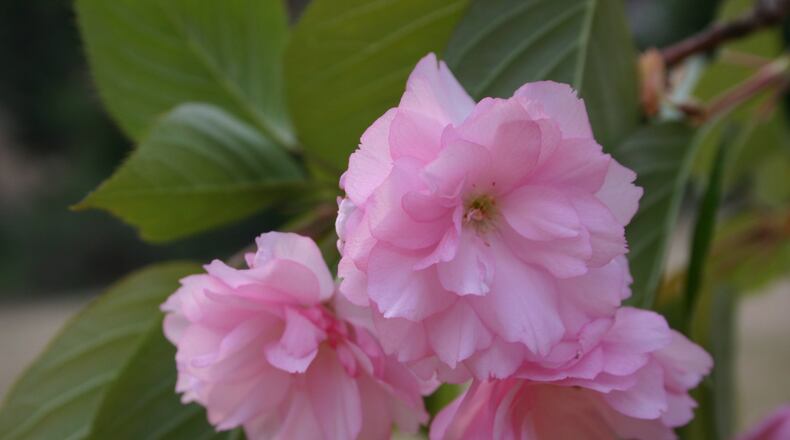Q: You were talking on the radio about the different flowering times of cherry trees. Can I get a list?David Chambers, Marietta
A: Flowering cherry trees can give us blooms for at least three months in spring. Their flowering times overlap so there are always blooms to enjoy on your daily commute. I need to sling some Latin at you to make sure you ask for the right tree if you buy one. Prunus mume 'Beni-chidori' starts blooming after just a few warm days in January. Okame cherry (Prunus x incamp 'Okame') is the Pepto-Bismol pink tree you notice in early February. Next to bloom is Yoshino cherry (Prunus × yedoensis), whose white flowers fade to light pink before they fall in March. Kwansan cherry (Prunus serrulata 'Kwanzan') is covered with double pink flowers that resemble chrysanthemums. Kids love to stand under one in April as a limb is shaken to cover them with floral "snow." Autumn cherry (Prunus subhirtella 'Autumnalis) has small, light pink blooms in fall and sometimes again in spring.
Q: I am planting eleagnus around my property. I found one with berries and seeds. Can I plant them and grow more shrubs?Donna Howard, email
A: Before you plant more eleagnus, consider that many people call it a noxious weed. I grant that it grows rapidly and can form an impenetrable screen. It also provides food for wildlife. But once your eleagnus shrubs start producing seeds, you'll find sprouts everywhere you don't want them on your property. I have a list of better screening plants at bit.ly/GAscreen.
Q: How much composted and bagged cow manure should I add to my vegetable garden before planting?Bridget Morgan, Waleska
A: Bagged cow manure contains very little nutrition for plants. As for adding organic matter to your soil, there are better materials available. Finely screened pine bark chips are commonly sold as soil conditioner. A layer a couple inches thick should be tilled into the top six inches of soil. After your soil has been made coarse and well drained, you can use garden fertilizer, either organic or synthetic, to help your vegetables grow strong. I have a collection of University of Georgia publications you can use to learn about gardening at bit.ly/GAveggdn.
Q: We recently planted some dwarf loropetalum and mahonia. We were told they were deer-proof but the neighborhood deer ate them. We are looking at the following replacements: abelia, gardenia, camellia, osmanthus, and distylium. Any more?Cathy Rainer, Watkinsville
A: You’ve made good choices for deer resistance but I don’t think there is a plant in Georgia that deer won’t at least nibble when they are hungry or when the foliage is lush in spring. Consider adding a variegated yucca to your list. Deer rarely browse it. I have a good list of plants that deer prefer and plants that deer mostly avoid at bit.ly/GAdeerplt.
About the Author
Keep Reading
The Latest
Featured


